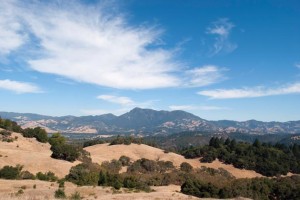Scientists and citizen scientists may share a love of nature, but they have few tools to exchange information. A new online tool called the Bay Area Bio-Atlas seeks to deepen those links in an effort to provide a real-time field guide to the region’s flora and fauna.
The new initiative is a project of iNaturalist, an online map that allows citizen scientists to share information and photos about their latest wildlife sitings. The Bio-Atlas adds scientists to the mix to provide the expert data as a foundation for the citizen contributions.
iNaturalist co-director Dr. Scott Loarie said that combining the two — citizens and scientists — will help the conservation community track changes in biodiversity over time in response to climate change and other stressors. Confirmed citizen-science observations will be archived in Calflora, an online database of California wild plants.
“There was no system in place to monitor new populations,” Loarie said. “This will help set the stage and act as a baseline for a standardized checklist.”
The Bio-Atlas will gather species lists from participating wildlife reserves, with the goal of creating a map of all animal and plant species across the Bay Area’s 10 counties. It’s currently in pilot mode at the Pepperwood Preserve in Santa Rosa, where local scientists are being trained in how to use iNaturalist to record and upload their data.
Created in 2008, iNaturalist receives over a thousand contributions a week from users globally.
“Like bird lists, we want to make biodiversity accessible for all plants and animals,” said Loarie. “For instance if someone records a plant observation using iNaturalist, they might find out that this particular plant is one of three plants listed in this location. It empowers the user to learn about the natural world and their surroundings.”
He said the application, available as a mobile phone application, has helped a younger generation of conservationists become more involved and connects them to the older generation.
“Young people are really engaged and totally adept at using iphones, but they may not have the same experience identifying a frog or plant species while out on a trail,” Loarie said. “It’s a neat complimentary way of learning.”

.jpg)


-300x221.jpg)
-300x200.jpg)